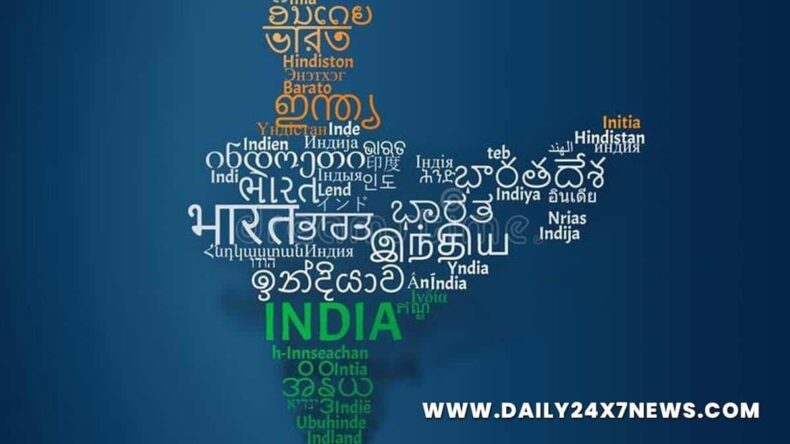
This Article is about the one of the current political and social controversy that exists between Hindi speakers and non Hindi speakers. The fresh awakening of anti-Hindi imposition movements of 1965, followed by the draft of National Education Policy by the central Government.
BACKGROUND
Language is one of the mediums of human communication. The languages in India have a long history of several invasions and colonization and imperialism.
Today, Indian Constitution accepted 22 languages which are considered as major languages in India. While framing the constitution for India, the makers are thought of making Hindi as official language for India. The major criticism and opposition faced for this was the dialect of Hindi and other languages Existed in India
MUNSHI-AYYANGAR FORMULA
The opposition of non Hindi speakers created a fear of threat to the Unity of India. The proposal of language put forward by Ayyankar and K.M Munshi, the members of constituent assembly is known as Munshi-Ayyangar Formula. as per this formula it was ensured for the 15 years after commencement of constitution that Indian Constitution will not specify any national Languages. English and Devanagari Hindi will be the official languages of the Union. Also the Constitution makers recognized other languages in various regions of India in the constitution
INDIAN CONSTITUTION AND LANGUAGE
Part xvii of Indian Constitution deals with official languages in India. Article 343(1) of Indian Constitution enshrined that the official language of the union shall be Hindi in Devanagari script.
According to Article 344 of Indian Constitution, there should be a commission which shall consist of a chairman and such other members representing the different languages specified in the 8th schedule .
Article .344 (2) enumerates the duty of commission to make recommendation and Article 344 (3) in the constitution deals that in making their recommendations under Clause 2 , the commission shall have due regard to the industrial, cultural and scientific advancement of India, and the claims and interests of persons belonging to the non-Hindi speaking areas in regard to the public services.
The 8th schedule contains a list of major 22 languages in India.
NATIONAL LANGUAGE AND OFFICIAL LANGUAGE
It is to be noted that, the constitution of India Art.343 deals only with official languages. Many people in India are confused about the status of Hindi as a National language . Recent tweets of Indian Celebrities grabbed the attention of people and pushed to the question whether Hindi is in fact India’s National Language.

As of Now India has no national language and English and Hindi are considered as official languages.
The major difference between National And Official Language is that, National Language is connected with countries social, political and cultural functions and official language is more to do with government and its affairs.
A National language should be used by larger part of population of a country and which may or may not be designated on official language.1
DO WE REALLY NEED A NATIONAL LANGUAGE FOR INDIA?
Regarding the official status of Hindi there was massive agitation in the state of Tamil Nadu. The Anti- Hindi imposition agitation in 1965’s was a mass protest against Hindi. in other parts of India except Tamil Nadu studied 3 Languages as part of Curriculum as compulsory but Tamil Nadu only gave importance to Tamil , their mother tongue and English. After the recent political speech and Tweet war between celebrities of bollywood and south Film Industries have widened the gap of the Language war.
The Kerala Chief Minister Mr. Pinarayi Vijayan joined Tamil Nadu C.M M.K Stalin in nagging purported move by the Parliamentary committee on official language to use Hindi as a medium of Institution in IIT’s , IIM’s, Kendra Vidyalayas, and Central Universities in Hindi Speaking states and regional languages in similar centers of learning in another regions.
The concern for eligible candidates of public services who are denied the opportunity only on the basis of language is shared by CM Pinarayi Viayan through a letter to the Prime Minister. he pointed out the Concept of ‘Unity In Diversity’ .
Unity in Diversity makes India distinct from other countries. Diversities in language, culture like India can never be achieved for any other countries. As this being the fact, what is the point of attaining Unity over one language?
CONCLUSION
Only 43.63% of total population speak Hindi as a first language as per the census of 2011, which means majority are non-Hindi speakers. In such a situation was there any need for making Hindi as a national language ? The National Education policy draft 2020 introduced by Union Govt. faced various criticism.
Beyond the political quarters and media controversies regarding the Govt plan to nationalise Hindi and controversial speeches regarding the ‘Hindi as national language’ , ‘one nation one language ‘ debate, it is unforgettable that India is a home of multiple languages , cultures and diversity. As of now It is expected from the government to not to disrupt the balance that has been long maintained in the constitution of our India.
CITATIONS:
- timesofindia.indiatimes.com/life-style/parenting/moments/explain-for kids-id-Hindi-indias-national-or-officiallanguage-know the difference/articleshow/91152734.cms.
Read more: DMK Senior leader Elangovan uses derogatory comments for Hindi Language: BJP slammed the remarks












